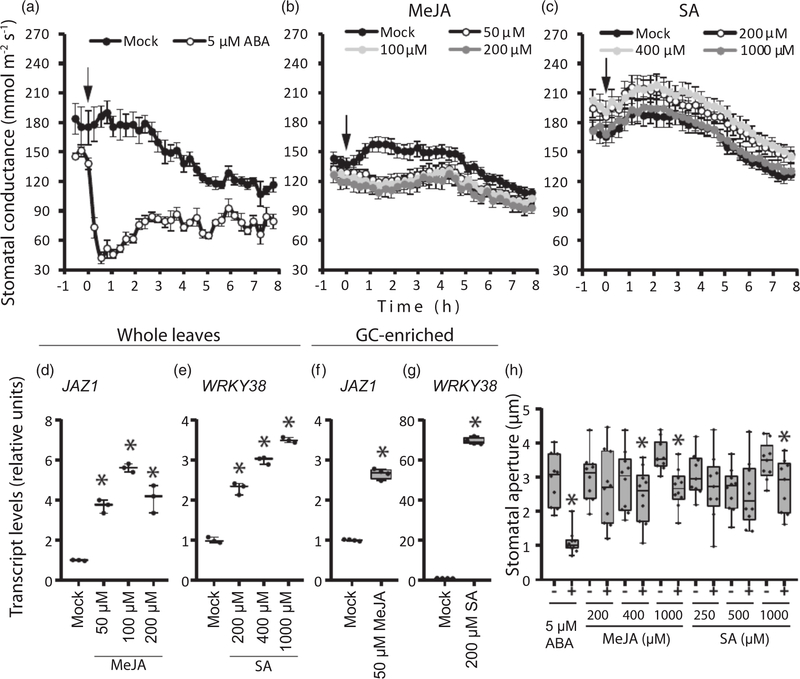Figure 6.
Effects of abscisic acid (ABA), methyl jasmonate (MeJA) and salicylic acid (SA) treatments on stomatal functioning in Arabidopsis.
Arabidopsis plants (Col-0) at the age of 3–4 weeks were sprayed with ABA (a), MeJA (b) or SA (c), in various concentrations. Time courses are shown for stomatal conductance (average ± SE, n = 4 for ABA, n = 16–24 for MeJA and SA). Relative expression of JAZ1 and WRKY38 after MeJA (d) and SA (e) treatments, respectively, in plants analyzed in (b) and (c) (n = 3). The same transcripts were quantified in guard-cell-enriched epidermal fractions (GC-enriched) collected from MeJA- and SA-treated plants (n = 4) (f and g). Asterisks show significant differences between mock and hormonal treatments (one-way ANOVA, followed by Dunnett’s post hoc test; P < 0.05). (h) ABA demonstrates a significantly higher potency to induce stomatal closure in stomatal assays than MeJA and SA. Epidermal peels were collected from plants at age of 4–5 weeks and incubated in stomatal opening buffer supplemented with ethanol (mock), ABA, MeJA or SA. The width of stomatal apertures was measured after exposure for 3 h (n = 9–10 individual plants). The boxes extend from the 25th to the 75th percentiles, with the horizontal lines plotted at the median values. The individual data points are shown as dots, whereas the whiskers are the minimum and maximum values. Asterisks show statistically significant differences between the mock (-) and the hormonal treatment (+) by repeated-measures ANOVA (P < 0.05).

